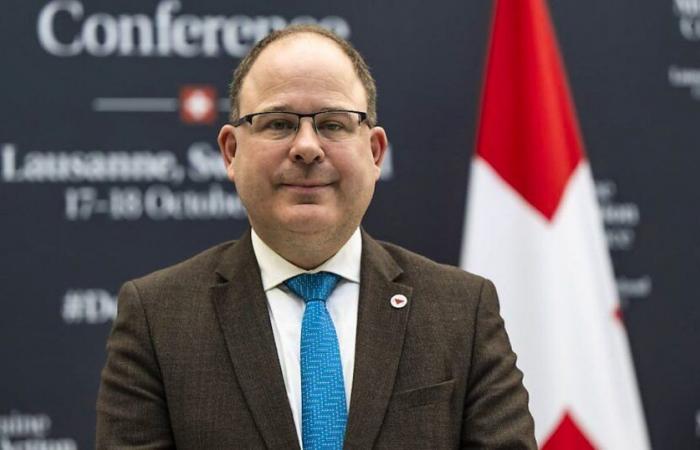Ukraine wants to demine four fifths of its contaminated territory by 2033. “It’s ambitious, but it’s doable,” says the director of the Geneva International Center for Humanitarian Demining (GICHD) in an interview with Keystone-ATS. Tobias Privitelli.
ATS
His institution, one of three international centers financed by the Confederation in Geneva, supported the Ukrainian authorities to establish this new policy and a three-year plan to begin implementing it. To achieve the objectives, “good technologies” will be needed, admits the Swiss ambassador on the sidelines of the Lausanne ministerial on humanitarian demining in Ukraine.
The most pessimistic estimates speak of 700 years to completely cleanse the war-torn country. Others, thanks to the new instruments, mention a decade. “This is certainly the largest contamination that our center has seen,” notes Mr. Privitelli.
However, Ukraine now has “great financial and technological support and in terms of deminers present on site”, he adds. This situation could make this country “a model” for humanitarian demining in other states in the future.
Certainly, the task is massive, as Ukrainian Prime Minister Denys Shmygal himself admits. Up to a quarter of the country could be affected, according to estimates. “There are certainly many territories which ultimately do not present themselves as contaminated,” explains the ambassador, who began his mandate at the head of the GICHD last August. His center began working with kyiv on this new demining policy 18 months ago, in collaboration with other partners.
Several million francs
“They were very open to our suggestions” in terms of approach, rules and systems to identify parts of the country to decontaminate, insists the ambassador. The GICHD received 5 million francs out of the 100 million envelope allocated by the Confederation to demine Ukraine. Far from the tens of millions planned for the Swiss Mine Clearance Foundation (FSD) which works to remove explosives in the Kharkiv and Kherson region.
According to Mr. Privitelli, Thursday’s ministerial launched the application of the new Ukrainian policy. The GICHD will continue its efforts, notably by organizing a conference on innovation in kyiv in 2025. The Swiss ambassador also sits on the Supervisory Board of the Ukrainian Humanitarian Demining Center.
The “goodwill” and resources of the international community could also pose a challenge if this assistance is not organized. Perhaps “the biggest obstacle” in the application of Ukrainian national policy, the director adds.
The GICHD and the Confederation only support kyiv for humanitarian demining, without the threat of being associated with war efforts, notes the ambassador. Military mine clearance is carried out by actors from the Ukrainian army.
sn, ats






